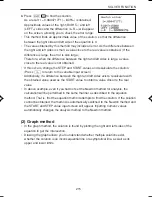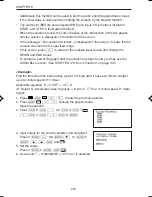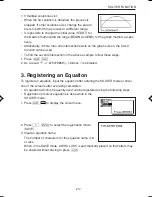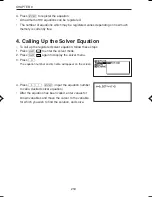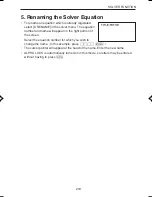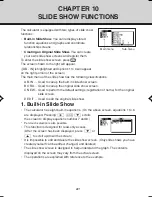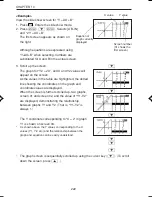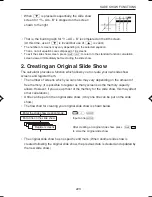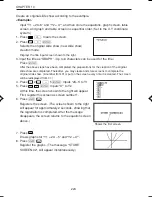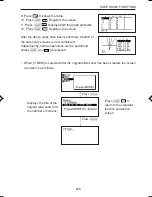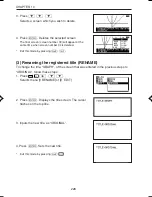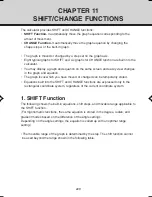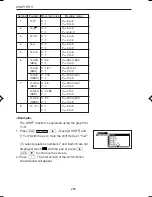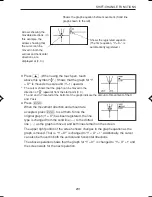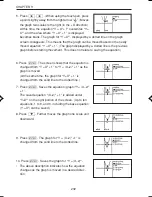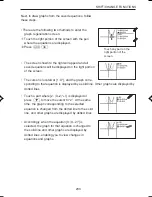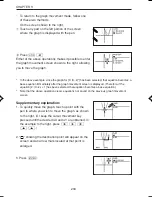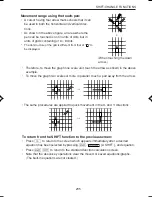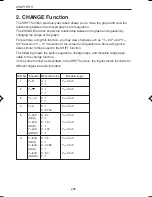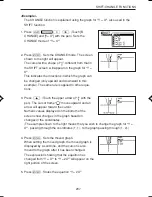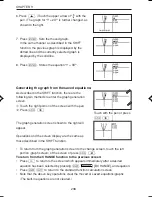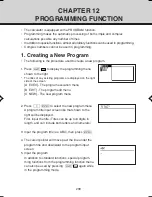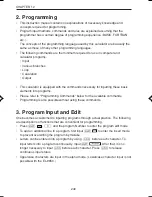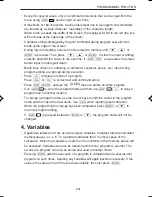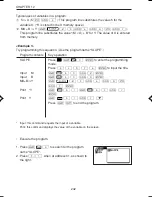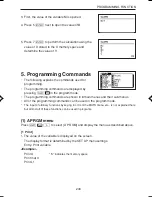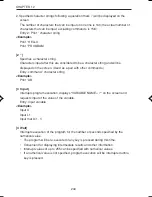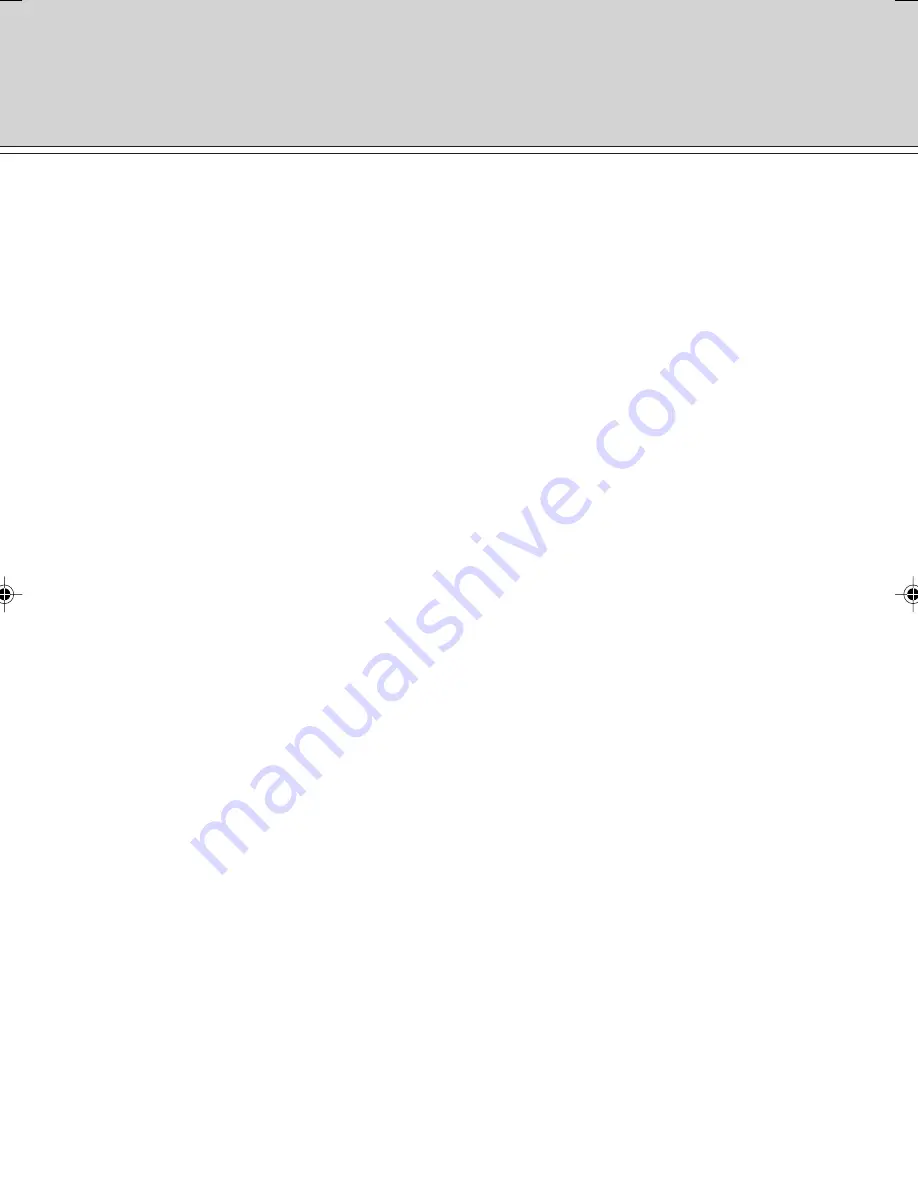
229
SHIFT/CHANGE FUNCTIONS
The calculator provides SHIFT and CHANGE functions:
•
SHIFT Function.
It automatically move the graph equation corresponding to the
amout of movement.
•
CHANGE Function.
It automatically move the graph equation by changing the
shape (slope) of the built-in graph.
• The graph is moved or changed by a step set on the graph axis.
• Eight typical graphs for SHIFT and six graphs for CHANGE function are built into the
calculator.
• You may display a graph and equation on the same screen and easily view changes
in the graph and equation.
• The graph locus which you have moved or changed can be temporarily stored.
• Equations built into the SHIFT and CHANGE functions are expressed only in the
rectangular coordinate system, regardless of the current coordinate system.
1. SHIFT Function
The following shows the built-in equations, shift steps, and movable range applicable to
the SHIFT function.
(For trigonometric functions, the same equation is stored in the degree, radian, and
gradient modes based on the difference of the angle settings.
Depending on the angle settings, the equation is called up with an optimal range
setting.)
• The movable range of the graph is determined by the step. The shift function cannot
be used beyond the range shown in the following table.
CHAPTER 11
SHIFT/CHANGE FUNCTIONS
EL-9650-(11)En (229-238)
8/1/00, 9:29 AM
229
Summary of Contents for EL-9650
Page 10: ...viii ...
Page 46: ...36 CHAPTER 1 ...
Page 230: ...220 CHAPTER 9 ...
Page 268: ...258 CHAPTER 12 ...
Page 349: ...339 APPENDIX When coordinate system is Rect param or polar ...
Page 350: ...340 APPENDIX When coordinate system is Seq F STYLE2 E STYLE1 ...
Page 352: ...342 APPENDIX ...
Page 353: ...343 APPENDIX on Program screen ...
Page 354: ...344 APPENDIX ...
Page 355: ...345 APPENDIX ...
Page 356: ...346 APPENDIX ...
Page 357: ...347 APPENDIX ...
Page 358: ...348 APPENDIX ...

